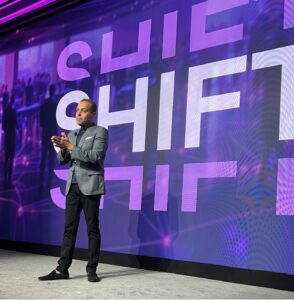In a landscape increasingly defined by data-driven insights and transformative AI, the alliance between Informatica and Amazon Web Services (AWS) has flourished. At AWS re:Invent 2023, Informatica, renowned for enterprise cloud data management, announced a trinity of integrations with AWS, marking another stride in their collaborative journey. This is just one of many “better together stories” we see across the data management industry, which greatly benefits organizations building modern data management platforms to fully empower their business with intelligent data insights to drive faster and better decision-making, competitive advantages, and innovation.
Organizations first need to build the proper data management infrastructure to achieve these results. In our 2023 “State of DataOps: Unleashing the Power of Data” research, we found that 39% of organizations find keeping pace with rapidly evolving technology and tools is one of their top challenges for data management, with 33% ranking the integration of disparate data sources, 32% limited resources and 29% lack of skills. All emphasize the need for solid, forward-thinking partners.
Some of the value brought by Informatica together with AWS in their announcement include these areas:
Strengthening Foundations for AI-powered Solutions
Informatica’s partnership expansion unveils a deeper integration with Amazon Bedrock, a managed service offering access to foundational models for generative AI applications. Leveraging Informatica’s Intelligent Data Management Cloud (IDMC), this integration ensures trusted data provisioning, enriching context for enhanced accuracy in pivotal AI use cases. The comprehensive suite of data management tools within IDMC, from cataloging to governance, amplifies Amazon Bedrock’s capabilities, empowering customers to harness AI’s potential.
Empowering Healthcare Data Management
Another milestone lies in the alignment with AWS HealthLake, a HIPAA-eligible service facilitating secure storage, transformation, and analysis of health data. Informatica’s IDMC, fortified with healthcare-specific accelerators, ensures seamless integration with AWS HealthLake. This synergy not only harmonizes master data but also furnishes a holistic view of healthcare entities. The result? Improved patient engagement, optimized provider networks, and elevated clinical outcomes—all within stringent compliance frameworks.
Redefining Data Lake Access and Governance
Recognized as a Launch Partner for Amazon S3 Access Grants, Informatica continues to innovate in data lake management. This integration addresses the need for streamlined, secure access to data stored in Amazon S3. By merging AI-powered data access management with Cloud Data Marketplace capabilities, Informatica simplifies self-service access while upholding enterprise-scale governance protocols.
A Testament to Mutual Growth
The resonance between Informatica and AWS signifies a commitment to advancing cloud, data, and AI capabilities. This underscores the significance of these integrations in empowering customers, particularly those in regulated industries, to seamlessly manage trusted data, driving intelligent decisions and operational efficiencies.
A Future of Data Transformation
As enterprises strive for agility and innovation, partnerships like the one between Informatica and AWS pave the way for cutting-edge solutions. These integrations exemplify a shared vision: to empower businesses with secure, governed, and actionable data—a fundamental pillar in shaping a data-driven future.
In essence, the amalgamation of Informatica’s robust data management suite with AWS’s scalable infrastructure heralds a new era of possibilities, where data becomes not just a resource but a catalyst for unprecedented growth and innovation.

